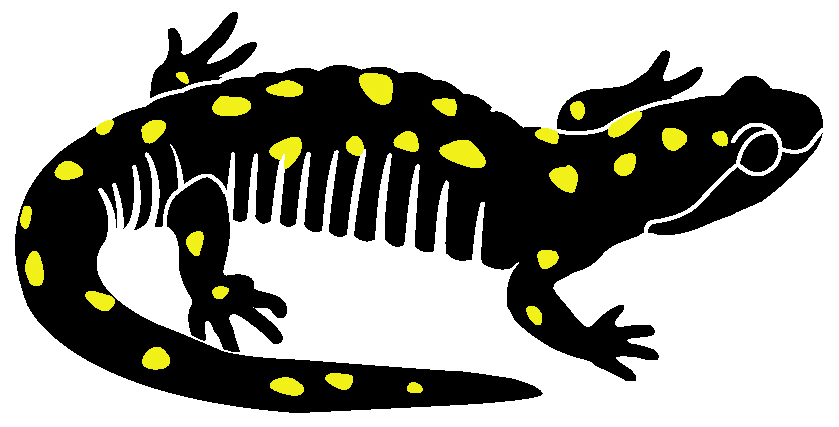Vernal Pool Ecology
The Woodland Pool
As you walk through the New England woods in winter and peer between the branches of the leafless trees, you might discover a small frozen pond formed in a shallow depression. Return to this area in early spring when the soil has thawed and you might hear the quacking chorus of wood frogs or observe spotted salamanders as they plod to the water in a thousands-year-old mating ritual. Visit the pool in late spring after the plants leaf out and you could be entertained by dragonflies darting above the surface and swooping to catch a meal, wading birds probing the water for the abundant tadpoles, or green frogs yelping as they leap away at your approach. Within the clear water beyond the schooling amphibian larvae may be abundant fairy shrimp, insect larvae, small crustaceans, fingernail clams, planaria and other invertebrates. Return again in the sticky heat of summer and this woodland oasis will likely be an open area of damp mud or dried, crinkled leaves. The water will be gone and with it the visible animal life which erupted a few months earlier. You will have observed the cycle of life in a New England vernal pool.
Special Note on diseases affecting vernal pool organisms
Vernal pools throughout Massachusetts and other areas are increasingly showing signs of infection by ranavirus and other pathogens that negatively affect a variety of wildlife. Please take the time to view the Northeast Partners in Amphibian and Reptile Conservation (NEPARC) video on sanitizing field gear on our Decontamination page.

Carnivores, grazers, and plants at home in a vernal pool.
A sampling of vernal pool life.




